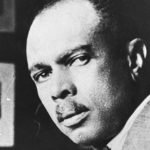Despising the collectivist society contemporary to him, committed to everything individual, Cummings resorted to a special printing drawing of a stanza and unusual punctuation during publication of poems.
Born: October 14, 1894
Cambridge, Massachusetts, U.S.
Author, artist
Cummings E.E. is an American poet and an artist.
By virtue of the same defiant motives, he abandoned capitals in his name writing (he undersigned ‘e.e. cummings’).
Biography of E.E. Cummings

Edward Estlin Cummings was born on the 14th of October, 1894 in Cambridge (state Massachusetts).
In the 1911, he was admitted to the Harvard University, where in the 1916, he got the master degree. A year later, belonging to a volunteer medical corps in France, he was arrested and sent to a prison camp. It turned out, Cummings on his correspondence basis had been accused of a betrayal with respect to France; this absolutely baseless accusation cost him several months of imprisonment.
Cummings returned into his Alma Mater in the 1952, having taken the professorial chair of the faculty of poetry bearing the name of Charles Eliot Norton (1827-1908). In the 1957, Bollingen Prize for Poetry from Yale University was awarded to him.
During his life, Cummings was married three times.
Cummings died in North Conway, New Hampshire on the 3d of September, 1962.
Creative work of E.E. Cummings

Cummings composed plays, novels, critical articles, published a diary of travel essays.
As an artist, he was distinguished by a skillful drawing. He got a great recognition in the professional environment. After a short interest in abstract painting, he went back to still lives, portraits and landscapes.
E.E. Cummings poems

The prison experience was reflected in his “The Enormous Room” (1922), a lyric narrative with a lot of vividly outlined characters.
The success of the novel “The Enormous Room” predetermined the interest in the first collection of E.E. Cummings poems “Tulips and Chimneys” (1923). This book emphasized the main theme of the author: bluntness and monstrosity of a mass person opposed against wisdom and beauty. In search of ways of realization of this theme, Cummings gave much attention to syntactic deformations, resorted to the use of jargon and showy advertising vocabulary, alternated traditional stanzaical forms with a free verse. He demonstrated a lot of ways of ridicule of the modern world with its tormentors and victims in his books “Tulips and Chimneys”, “XLI Poems” (1925), “is 5” (1926), “ViVa” (1931), “No Thanks” (1935), “Collected Poems” (1938), as well as in the subsequent collections “50 Poems” (1940), “1?1” (1944), “Ksaipa” (Greek ‘city’, 1950), “Poems” (1923-1954, 1954), “95 Poems” (1958) and “73 Poems” (1963).
In both mockeries and resounding, Cummings remains as the singer of the personality in his plays: “Him” (1927), “Tom” (1935) and “Santa Claus” (1946), in the diary of travel across the Soviet Union “Eimi” (Greek “I exist”, 1933), in lectures in the Harvard University, which were later published in the book “I” (1953) with the calling subtitle “six nonlectures”.
In the 1972 his “Complete Poems” (1913-1962) was edited.
Popular poems by E.E. Cummings
- i carry your heart with me
- a pretty a day
- if you like my poems let them
- Snow
- anyone lived in a pretty how town
- Seeker Of Truth
- since feeling is first… (VII)
- because i love you)last night
- somewhere i have never travelled, gladly beyond
- in Just
Who wrote “I carry your heart with me”?
I carry your heart with me (i carry it in) is the name of one of Edward Estlin Cummings’ most known love poems.
E. E. Cummings quick facts
- the poet’s father was a professor at Harvard University
- for many of his productive years, Cummings published his works with his own money for a comparatively small circle of readers
- while Cummings was a pacifist, he took part in World War I as a volunteer for the ambulance corps
- he had one sister, Elizabeth
- the poet’s only child, the daughter Nancy (she was born out of wedlock, and they reunited only in 1934), inspired one of his most successful plays, Santa Claus: A Morality
- Cummings’s first two marriages lasted two months and three years respectively, while his longest relationship lasted over three decades
- the author wrote around 2,900 poems, two novels, and four plays, as well as many essays
- E. E. Cummings was a Republican and a Unitarian.
E. E. Cummings death: September 3, 1962 in Madison, New Hampshire, U.S.



